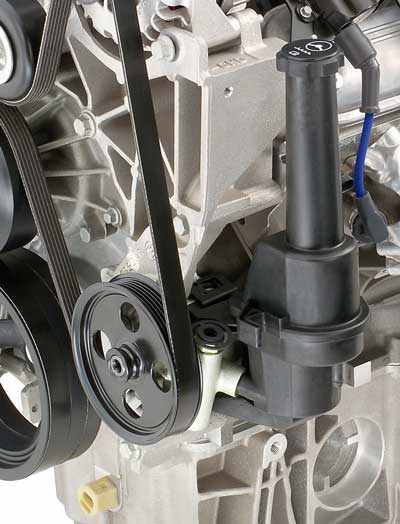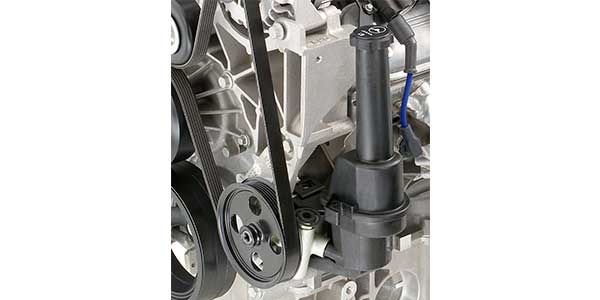
Models:
•1997-2010 GM passenger cars and light duty trucks, including Saturn
•2010 and prior HUMMER H2, H3
•2005-2009 Saab 9-7X
An analysis of returned power steering (PS) pumps that had been replaced for noise, no power assist, no or low pressure and leaking conditions has indicated a high number of “No Trouble Found” results.
When attempting to repair a power steering concern, the steering system analyzer should be used to assist the technician in a successful diagnosis.
In addition, extensive warranty analysis has shown that the following situations are all significant root causes of PS pump failures:
• Improper pulley installation;
• Re-using the O-rings;
• Using fluid other than the OE-specified steering fluid; and
• Failure to flush the PS system.
GM recommends the following tips for replacing a PS pump:
1. Low or no pressure from the PS pump may be the result of dirty or contaminated fluid, which could cause the pressure relief valve to stop functioning. Using the proper tools, flush and bleed the PS system. Any residual contaminants will result in pump failure.
2. When removing the pulley, use the proper special tools. Because the pulley alignment is critical, distorting the pulley may damage bearings on the new PS pump.
Note: Some new PS pumps may not include a new O-ring. Please refer to the appropriate Parts Catalog.
3. Be sure to use only the new O-rings included with the PS pump. The new reservoir O-ring must be lubricated with OE-specific PS fluid prior to installation. Also make sure that the control valve O-ring is in its exact groove position and is NOT covering the pressure bypass hole.
4. Bleed the PS system according to the procedures/recommendations in the service information.
Following these procedures and using the correct tools and fluids should help ensure that the new PS pump operates properly.
Skipping steps may cost you time and trouble later.
Courtesy of ALLDATA.














